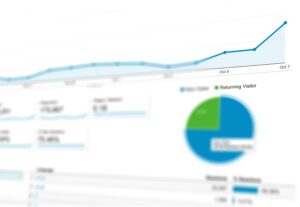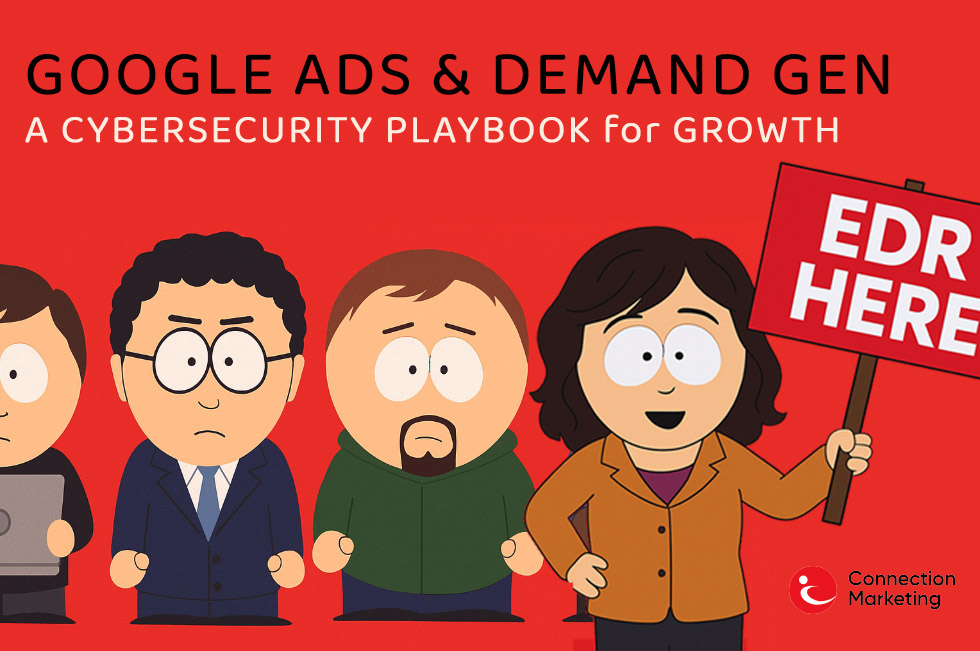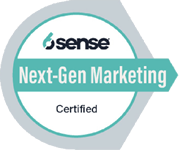
As the digital advertising landscape continues to evolve at a breakneck pace, businesses looking to maximize their return on ad spend (ROAS) and achieve their marketing goals. As new technologies emerge and consumer behaviors shift, the paid media landscape is undergoing a significant transformation. To help you navigate this complex and ever-changing environment, we’ve identified four key trends that are shaping the future of paid advertising: the rise of artificial intelligence (AI) and machine learning (ML), the challenges of hyper-targeting in a privacy-focused world, the emphasis on data privacy and transparency, and the growing importance of pay-per-click (PPC) advertising in account-based marketing (ABM) strategies.
The Transformative Power of AI and Machine Learning
One of the most significant trends in paid media advertising is the increasing adoption of AI and ML technologies. These advanced tools are revolutionizing the way businesses approach ad optimization, enabling them to process vast amounts of data, uncover valuable insights, and make data-driven decisions at an unprecedented scale.
-
Real-time Ad Optimization
AI-powered platforms can automatically optimize ad campaigns in real-time, adjusting bids, targeting, and creative elements based on performance data and predictive analytics. By continuously learning from data and refining their algorithms, these platforms can identify patterns and opportunities that human analysts might miss, leading to better ad relevance, higher engagement rates, and ultimately, improved ROAS.
-
Predictive Analytics
Moreover, AI and ML are enabling new forms of predictive analytics, allowing businesses to anticipate consumer behavior and preferences and proactively adjust their advertising strategies. For example, by analyzing data on past customer interactions and purchase history, AI algorithms can predict which users are most likely to convert and adjust bids and targeting accordingly. This not only helps businesses optimize their ad spend, but also ensures that they are reaching the right audiences with the right message at the right time.
-
Implementing AI and ML Effectively
However, while the benefits of AI and ML in paid media advertising are clear, implementing these technologies effectively requires a strategic approach and a willingness to experiment and iterate. Businesses need to invest in the right tools and talent, develop a data-driven culture, and continually test and refine their AI-powered campaigns to ensure they are delivering the desired results.
Navigating the Challenges of Hyper-Targeting
Hyper-targeting, the practice of using detailed consumer data to create highly personalized ad experiences, has long been a cornerstone of effective paid media advertising. By leveraging data on demographics, interests, behaviors, and past interactions, businesses have been able to deliver targeted ads that resonate with individual users and drive higher engagement and conversion rates.
However, the landscape of hyper-targeting is shifting, driven by growing concerns over data privacy and the introduction of new regulations like the General Data Protection Regulation (GDPR) and the California Consumer Privacy Act (CCPA). These laws are making it harder for advertisers to collect and use personal data for targeting purposes, forcing them to rethink their strategies and find new ways to reach their desired audiences.
-
The Shift Towards Contextual Targeting
One approach that is gaining traction in this new environment is contextual targeting. Instead of relying on individual user data, contextual targeting involves placing ads based on the content and context of a website or app. For example, an ad for running shoes might appear on a fitness blog or a health and wellness app, regardless of the individual user’s profile. While contextual targeting may not be as precise as hyper-targeting, it can still be highly effective in reaching relevant audiences and driving engagement.
-
The Rise of Ad-Blocking and the Phasing Out of Third-Party Cookies
Another challenge facing advertisers in the era of privacy is the rise of ad-blocking technologies and the phasing out of third-party cookies. As users become more savvy about protecting their online privacy, many are turning to ad-blocking software to limit their exposure to targeted ads. At the same time, major web browsers like Safari and Firefox are phasing out support for third-party cookies, which have long been a key tool for tracking user behavior and enabling hyper-targeting.
-
Building Trust and Transparency with Audiences
To adapt to these changes, businesses need to focus on building trust and transparency with their audiences. This means being clear and upfront about how data is collected and used, providing users with easy ways to control their data preferences, and investing in first-party data strategies that rely on direct relationships with customers. By prioritizing privacy and putting users in control of their data, businesses can build stronger, more sustainable relationships with their audiences over the long term.
The Imperative of Data Privacy and Transparency
As the paid media landscape evolves, one trend that is becoming increasingly important is the emphasis on data privacy and transparency. With high-profile data breaches and scandals making headlines on a regular basis, consumers are more aware than ever of how their personal data is being collected and used by advertisers and other online entities.
In response to these concerns, governments around the world are introducing new regulations and guidelines aimed at protecting consumer privacy and giving individuals more control over their data. The GDPR, which went into effect in the European Union in 2018, set a new standard for data protection and has inspired similar legislation in other regions, including the CCPA in California.
-
The Impact of Privacy Regulations on Paid Media Advertising
For businesses engaged in paid media advertising, these developments present both challenges and opportunities. On the one hand, complying with new privacy regulations can be complex and costly, requiring significant investments in data management and security infrastructure. Advertisers may also face restrictions on the types of data they can collect and use for targeting purposes, potentially limiting their ability to deliver highly personalized ad experiences.
-
Data Privacy and Transparency as a Differentiator

On the other hand, the emphasis on data privacy and transparency can also be a differentiator for businesses that are willing to go above and beyond in protecting their customers’ data. By implementing strong data governance practices, providing clear and concise privacy policies, and giving users meaningful control over their data preferences, businesses can build trust and credibility with their audiences.
Moreover, the shift towards privacy-focused advertising can also drive innovation and creativity in the paid media space. As traditional targeting methods become less effective, advertisers will need to find new ways to reach and engage their audiences, such as through contextual targeting, first-party data strategies, and value-added content experiences.
-
Prioritizing Data Privacy and Transparency in the Advertising Process
To navigate this new landscape successfully, businesses need to prioritize data privacy and transparency at every stage of the advertising process. This means investing in robust data management and security technologies, developing clear and transparent data policies, and regularly auditing and updating their practices to ensure ongoing compliance and alignment with best practices. By taking a proactive and user-centric approach to data privacy, businesses can not only mitigate risk but also build stronger, more trusting relationships with their customers over the long term.
The Growing Importance of PPC in Account-Based Marketing
Another key trend in the world of paid media advertising is the rising importance of pay-per-click (PPC) advertising in account-based marketing (ABM) strategies. ABM is a targeted approach to B2B marketing that focuses on identifying and engaging high-value accounts with personalized messaging and content experiences. Unlike traditional lead-based marketing, which casts a wide net in hopes of generating a large volume of leads, ABM is all about quality over quantity, targeting a smaller number of accounts with a higher likelihood of conversion.
-
The Role of PPC in ABM Strategies
PPC advertising plays a crucial role in ABM strategies by allowing businesses to deliver highly targeted and relevant ads to key decision-makers within their target accounts. By leveraging account-level data and insights, marketers can create customized ad content and landing pages that speak directly to the specific needs and pain points of each account, increasing the likelihood of engagement and conversion.
-
The Benefits of Using PPC in ABM
One of the key benefits of using PPC in ABM is the ability to reach target accounts across multiple channels and touchpoints. With platforms like Google Ads, LinkedIn Ads, and Facebook Ads, businesses can deliver targeted messages to decision-makers wherever they are online, whether they are searching for solutions on Google, engaging with industry content on LinkedIn, or browsing their social media feeds.
Moreover, PPC advertising provides a high degree of measurability and accountability in ABM campaigns. By tracking metrics like click-through rates, conversion rates, and cost per acquisition at the account level, marketers can gain valuable insights into which accounts are engaging with their ads and content, and which are not. This data can then be used to optimize campaigns in real-time, adjusting bids, targeting, and messaging to maximize performance and ROI.
However, to be truly effective, PPC advertising in ABM requires a strategic and integrated approach. Marketers need to work closely with sales teams to identify target accounts and develop customized messaging and content that aligns with each account’s unique needs and priorities. They also need to ensure that their PPC campaigns are integrated with other ABM tactics, such as email marketing, direct mail, and sales outreach, to create a seamless and consistent experience for each account.
-
Maximizing the Impact of PPC Advertising in ABM
To maximize the impact of PPC advertising in ABM, businesses should consider investing in specialized tools and platforms that are designed specifically for account-based advertising. These solutions can help marketers automate and scale their ABM campaigns, providing advanced targeting and personalization capabilities, as well as robust reporting and analytics.
Conclusion
As the paid media landscape continues to evolve at a rapid pace, businesses need to stay ahead of the curve to remain competitive and achieve their marketing goals. By embracing the power of AI and machine learning, navigating the challenges of hyper-targeting in a privacy-focused world, prioritizing data privacy and transparency, and leveraging PPC advertising in ABM strategies, businesses can position themselves for success in the ever-changing world of paid media.
At Connection Marketing, we specialize in helping businesses stay ahead of the curve and maximize their return on ad spend through cutting-edge paid media strategies and technologies. Our team of experts combines deep industry knowledge with a data-driven approach to deliver customized solutions that drive measurable results. Whether you’re looking to optimize your existing campaigns or launch new initiatives, we have the expertise and tools to help you succeed. Contact us today to learn more about how we can help you navigate the evolving landscape of paid media advertising.
FAQs
- How can businesses balance the benefits of hyper-targeting with the need for data privacy and transparency?
To strike the right balance, businesses should focus on building trust with their audiences through clear and transparent data practices, while also exploring alternative targeting methods like contextual targeting and first-party data strategies.
- What are some of the key metrics to track when measuring the success of PPC advertising in ABM campaigns?
Key metrics to track include account engagement (e.g., ad clicks, website visits), pipeline influence (e.g., opportunities generated), revenue impact, and return on ad spend (ROAS) at the account level.
- How can businesses ensure that their AI-powered advertising campaigns are delivering the desired results?
To ensure success with AI-powered advertising, businesses should invest in the right tools and talent, develop a data-driven culture, and continually test and refine their campaigns based on performance data and insights.








